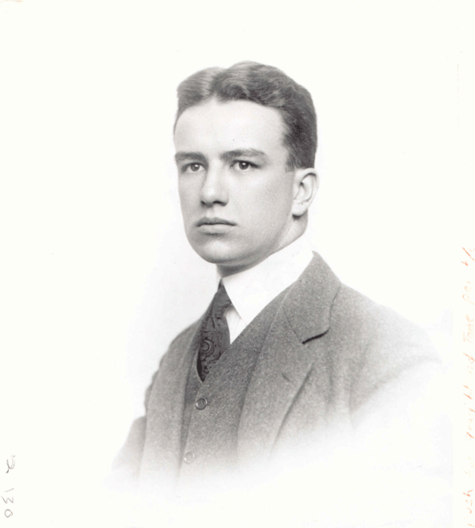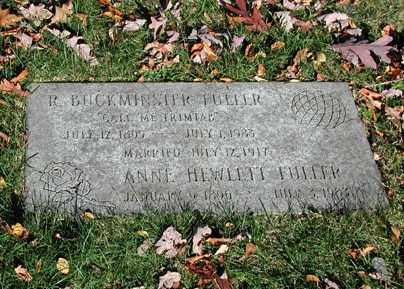R. Buckminster Fuller (1895-1983)

Richard Buckminster Fuller, Jr., decorated inventor, designer, and visionary, was born in Milton, Massachusetts on July 12, 1895.
Fuller was born to merchant Richard Buckminster Fuller and Caroline Wolcott Andrews Fuller. His family tree includes such notable ancestors as Timothy Fuller, a Massachusetts legislator, and Margaret Fuller Ossoli, feminist, author, and transcendentalist. Fuller entered Harvard College in 1913, but was quickly dismissed due to ‘irresponsible conduct.’ He spent the next several months apprenticed as a mechanic at a Canadian textile mill, and returned to Harvard in 1914. He was promptly dismissed again.
Fuller joined the Navy in 1917 and served in World War I. He married Anne Hewlett, daughter of architect James Monroe Hewlett, on July 12th of the same year. After completing his military duties, Fuller worked in various manufacturing companies. His life took a drastic turn in 1922 following the death of his four year-old daughter, Alexandra. He contemplated suicide in the wake of her passing and spent the next year in silence in his home, meditating and thinking. Fuller realized that the design of man’s physical environment could actually improve humanity.
Fuller spent the next years exploring this thought process which led to the creation of the Dymaxion. The idea combined the words ‘dynamic,’ ‘maximum,’ and ‘tension’ to represent doing more with less – the concept of ephemeralization that Fuller popularized. He designed and patented the Geodesic Dome, which represented the United States at the Montreal Exposition of 1967. Fuller went on to hold 25 patents, and continued designing structures with tensile integrity, believing that they could revolutionize the way people lived.
From the mid-1950s into the 1960s, Fuller received 40 honorary degrees, 30 national and international design awards, and from 1961-62 held the Charles Eliot Norton Chair of Poetry at Harvard. A true visionary, Fuller looked ahead to the ecological issues of the future. Coining the term ‘Spaceship Earth’ in 1951, he urged environmental protection and stewardship. Fuller lectured throughout the 1960s and 1970s to engaged audiences that considered him the da Vinci of their generation.
In 1983, Fuller’s wife lay unconscious in a hospital bed following complications in surgery. He died of a heart attack at her bedside, and she followed two days later without ever regaining consciousness.

R. Buckminster Fuller is buried beside his wife in Lot 2669 on Bellwort Path.
Adapted from the research of Judy Jackson and Cathy Breitkreutz, as published in Mount Auburn’s Person of the Week: R. Buckminster Fuller, 1999.
Leave a Reply